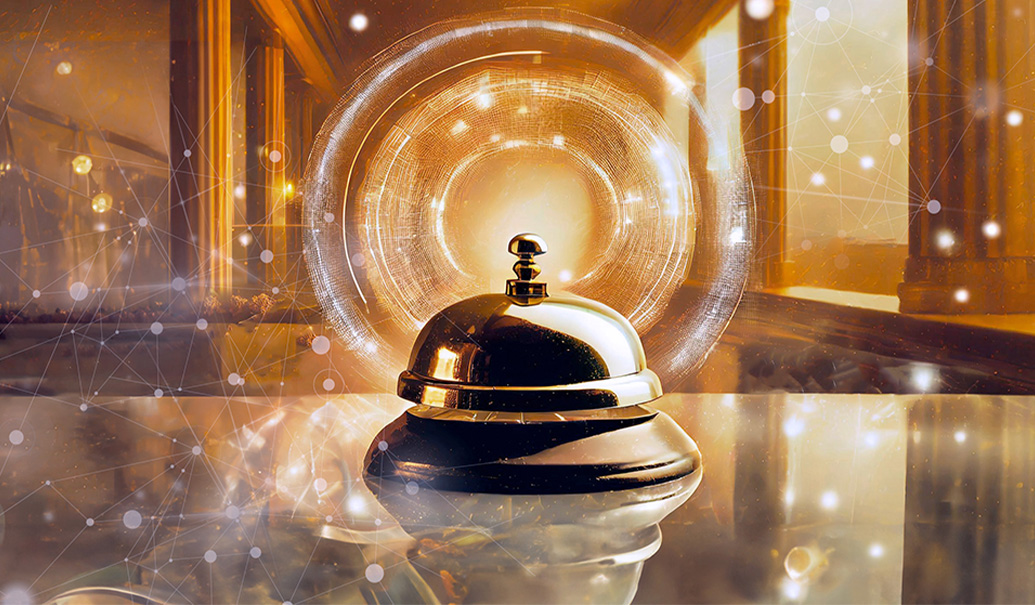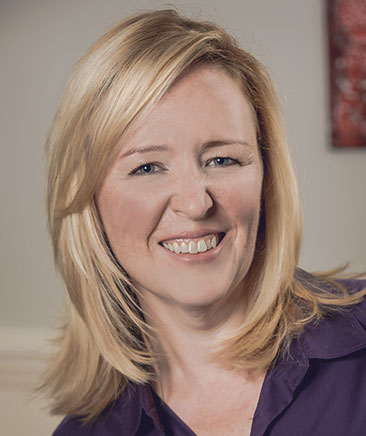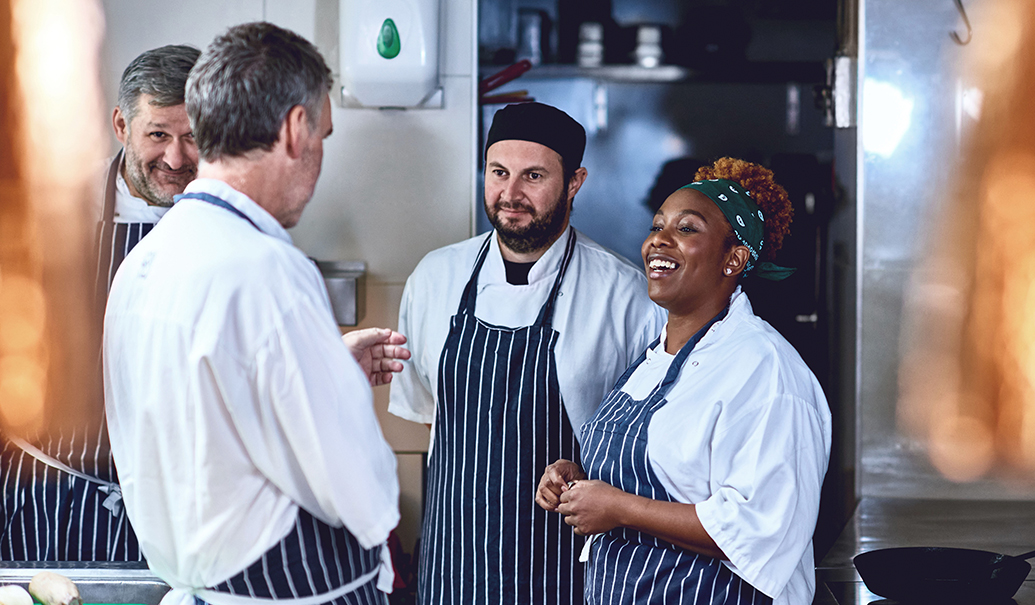Now that the aftereffects of the pandemic have largely settled, 2024 seems to be a year where we will get “back to normal.” There are headwinds, of course, from regional conflicts to concerns about inflation, talk of recession and the elections, but we’ve seen them before. This means we’re back to being able to make long-term forecasts and adapt our strategies accordingly.
We think 2024 will be the year that the hospitality industry can get back to (planning for) the future. During the past few years, we focused on the short term and often saw our plans interrupted soon after they were formed. Planning for the future will be both a luxury and a challenge. The last time we were able to plan at this level was late 2019 and early 2020, and a lot has changed since then.
“We see three opportunities. If we take advantage of them right, and right now, they will help us achieve our future visions, with better outcomes and possibly an easier path.”
We had plans and were heading down a path toward achieving them when the pandemic changed everything. We find ourselves at the other end of the disruption, wondering what has changed and where we might be headed now. In fact, thinking about our situation reminded us of the 1985 movie “Back to the Future” and the story of how Marty McFly traveled back to 1955 in a DeLorean DMC-12 his friend Doc Brown converted into a time machine. When Marty arrived in the past, he accidentally disrupted the moment his parents met and created an existential crisis. He had to work to set things right and make sure they ended up falling in love. Of course, when you change the beginning of a story, the ending can shift as well. When he returned, he still recognized his family and his life, but quite a bit had changed. He needed to adjust his expectations for his new reality. (Marty would again go back to the future, but that’s for the sequel—or the next article.)
We are now in a similar position to Marty. Our future was disrupted by the pandemic, and now we have to work to get it back. The question before us is: Now that we’re finally able to plan for our future, how do we adapt to what has changed, while keeping what was working? After returning from 1955 to his time (going back to the future), Marty walked into his house and found an arguably better version of his family. Can we turn our disruption into an opportunity to positively impact our future?
We see three opportunities. If we take advantage of them right, and right now, they will help us achieve our future visions, with better outcomes and possibly an easier path!
Acceleration of digitalization
Opportunity: One of the silver linings of the pandemic was an acceleration of digital roadmaps driven by a need for contactless interactions. While guest-journey-focused roadmaps were often put aside in favor of more operations-oriented digital solutions, two important things happened.
- Our guests, along with the wider society, became more comfortable with (and sometimes even preferred) digital interactions. They are more open to them and have higher expectations from them.
- The industry learned we can successfully implement and manage digital applications quickly. We certainly built some muscle and momentum around this capability.
Now is (probably past) time to get back to our future vision of digitalization across the enterprise.
Barriers: For a variety of reasons, the hospitality industry has always struggled with digital. Prior to the pandemic, we had visions of an omnichannel customer journey, guest personalization, digitally enabled guest experiences and increased direct bookings, but we struggled to make progress. We made excuses about the lack of data, lack of investment and lack of ROI. We can easily slip back into these excuses. Digital-first initiatives require different skill sets and mindsets than our more traditional operating environment. Right now, these are in short supply in our industry. There are always competing priorities, and some have lower costs and shorter time to value.
What should we do? Our suspicion is that your future vision for digital from 2019 is largely still valid. Dust off those digital customer journey plans. Revisit them with an eye to how guest relationships have evolved since the pandemic and how your current technology ecosystem impacts the roadmap. Importantly, focus on how you will get there, taking small steps toward that larger goal, and think hard about how you will demonstrate value at every step to keep the momentum going.
This is just the start. We need to push ourselves to embrace digital in areas we hadn’t considered before. We’re starting to get more comfortable with digital integrated into the on-property guest service experience, replacing some person-to-person interactions. This should be pushed further into all aspects of the customer relationship. For example, even traditional face-to-face relationship-driven sales teams need to be digitally enabled to meet their customers where they are and to nurture customer relationships at scale.
Digital transformation isn’t just guest-facing, and it isn’t just internet-enabled. Any time you replace human actions with system actions, it’s digital transformation. Many organizations have started looking at all kinds of automation opportunities to take manual effort out of processes. This means that any time you automate one of these manual processes, you’ve digitally transformed it. Even better, you’ve freed up human time to focus on stuff that only people can do.
So, to summarize:
- Revisit your pre-pandemic digital vision and roadmaps. Unlike Marty and Doc, where we’re going, we still need roads … roadmaps, that is. Revise them and put yourself back on the path by taking small steps, showing value along the way.
- Embrace digital interactions everywhere they happen. We typically think of B2C applications first, but B2B interactions are moving online as well. Sales organizations could be a great place to find opportunities to extend reach and relevance through digitalization.
- Consider automating manual processes. This is a digital application and therefore a digital transformation that also can have huge payback as you optimize your use of your human capital. (See our third opportunity below.)
- Don’t forget change management. Despite growing comfort with all things digital, moving to digitally enabled interactions will be a big change from business as it is today. Make sure you understand the impact and have a plan for guiding the teams and your customers through it.
Rise of generative AI (and AI in general)
Opportunity: While the emergence of generative AI is not a direct result of the pandemic, this technology has certainly been a disruptor. The AI-enabled future we envisioned prior to gen AI is still valid, but the ways in which gen AI can enable you to achieve that vision have expanded. Prior to the introduction of gen AI, it was believed that AI would take over routine manual tasks requiring human judgement to recognize images, read text or move objects, such as driving a car, but not human creativity to write promotional copy, make art or write music. Now it seems clear that AI also can replicate knowledge-worker tasks to create a very different and transformative opportunity.
Barriers: AI has been around for a couple of decades. Even prior to the pandemic, hospitality executives were pushing their teams to “get some AI,” recognizing the potential in embracing this emerging technology. The next generation of AI has accelerated these discussions because the usefulness and usability of AI models has dramatically increased. They are faster to deploy, more flexible in their usage and more accessible to the user. However, determining the best use cases and where to start is becoming more difficult. Privacy concerns and the implications of AI mistakes are justifiably standing in the way of many organizations moving forward in this area.
An important nuance here is that these gen AI models require significant human input and oversight. This dynamic makes them a “partner” rather than a “replacement.” As a result, you’ll have to redesign processes to integrate AI and ensure you’ve got the right change management in place so the people understand their new role.
What should we do? Here are some quick tips to get you started, but we also would recommend you find partners or experts who can advise you on this journey. AI innovation is moving quickly, so work with advisors who are staying on top of advances in this area.
- Start with the problem: All AI, regardless of type, is just another tool in the toolbox. It’s a powerful tool but still just a tool. Rather than starting with “How should I use gen AI?” the more useful question is “What am I trying to accomplish?” What business challenges are you trying to solve and what outcomes are you hoping to achieve? Then consider whether AI is the right tool to solve the problem. We discuss which problems are best solved with gen AI in our article, “A practical guide to AI for hospitality.”
- Educate yourself: Given the speed at which AI is advancing, some current applications of AI are likely unknown to you, potentially limiting your ability to identify problems AI could solve. With respect to our first point, hospitality leaders are responsible for educating themselves about what AI is, and importantly, what it is not, even if they don’t anticipate dealing directly with AI. This will help you consider all possibilities as you’re planning the path to your future. The article referenced above is designed to start you on this journey.
- Consider ethical implications: The biggest strength and also weakness of all AI models is their dependence on data. From a positive side, they can consume large volumes of data, find patterns and synthesize at a scale and scope far beyond human capability. From a (very) negative side, they see only what is in the data and lack the human lens to determine whether the result is factually correct, unbiased or safe. The creators of the publicly available gen AI models are taking steps to mitigate these concerns. However, when these models are deployed in your environment, it’s up to the business to identify risks so development teams can mitigate them. Every business leader’s job is to know the data well enough to participate in these discussions.
Business leaders, not the data scientists that code the solutions, are best positioned to identify the high-impact problems and define the potential biases or incorrect responses in the data, both crucial to the success of any AI application. The sooner you prepare to be a good partner in onboarding these solutions, the sooner the organization can achieve its potential.
Workforce of the future
Opportunity: The workforce has significantly changed since 2020. The hospitality industry in particular continues to face severe labor shortages that might make you wonder why we’re categorizing the workforce of the future as an opportunity. Managing through the challenges and constraints of the last two years has created two opportunities.
- Better understanding of what’s important to guests and feasible to deliver: Pandemic restrictions and labor shortages forced a lot of creativity in how service was delivered. Properties cut back services, redeployed people, adjusted hours and changed service procedures. We saw the impact on operational efficiency and guest feedback. While guest satisfaction scores and employee engagement suffered, we came out of this period with new ideas on how to execute on property and a new sense of what really matters to guests.
- Better access to talent, if you can be flexible: After experiencing the benefits and drawbacks of remote work and seeing how their employers operated under stress, employees now feel more empowered to advocate for themselves and their working conditions. Employers have learned that workers can be productive and engaged even if they aren’t physically present. Removing location dependency opens access to a much broader range of talent and unlocks a huge opportunity. However, demonstrating flexibility in working conditions, hours and locations if you want to attract that talent is more important than ever.
Barriers: Hospitality has traditionally been an in-person industry, so changing mindsets to provide the flexibility necessary to attract the right talent is a big shift. Some jobs will never be able to be remote, so finding other ways to increase flexibility, including scheduling role descriptions is critically important and puts a burden on leadership to manage. Regardless, ongoing labor shortages mean attracting and retaining labor at all levels of the organization will continue to be difficult. If we’re honest with ourselves, the industry is not always looked on as a great place to work. Some of our jobs are hard with poor work-life balance and uncompetitive in pay. Culture shifts will have to happen for us to demonstrate that we’re an industry of choice again.
What should we do? We’ll never achieve our vision for the future without the right talent in place, so talent acquisition is probably the most critical focus area for 2024 and beyond. There are steps to take now to ensure that labor doesn’t become the existential crisis that causes our future to disappear (like Marty’s and his brother and sister in the picture Marty often checks to be sure he’s making progress).
- Eliminate and automate where you can: After years of doing better with less, take a step back and look at your tasks and processes. First, are they really necessary? If they’re necessary, are they also manual and repetitive? Hospitality involves a lot of tedious work, whether it’s administrative or physical on-property work. Between advances in technology and new business models, a lot of this work could be automated or outsourced. Better yet, if you take a hard look, do you know why you are doing a given task? A lot of things, from reports to checklists and meetings, probably aren’t valued or noticed by their intended audience and can be added to your don’t-do list. Streamlining will let you refocus people on what they do best and very likely most enjoy, too.
- Review job descriptions and update hiring profiles: After you’ve gone through the eliminate and automate activity, make sure job descriptions accurately reflect the job. More importantly, make sure jobs are attractive to your target candidate pool. This may mean redistributing tasks or reorganizing the team. Think hard about the years of experience you are requesting and the in-person or time commitment. Releasing some of these constraints may make onboarding or scheduling a bit more challenging, but they should pay off with strong candidates from unexpected places.
- Upskill and cross-train: In a tight labor market, you probably will continue to struggle to fill all your open positions, so don’t lose sight of your current workforce. Investing in ongoing training and professional development will create a virtuous cycle. You’ll bring the necessary new skills into your organization, and your employees will reward your investment in them with increased engagement and retention.
Placing the right talent in the right jobs is the key to a bright future for hospitality. Over the years, our reputation as a great industry to work in has been tarnished. Us “lifers” know how special working in an industry that is dedicated to service is, but we’ve let the employee experience lag. Now is the time to start to turn all that around.
Despite some serious headwinds, I’m excited about 2024. It finally feels like we can get back to being forward-looking. Now that performance and cash flow have settled, we have an opportunity to return to innovation. We must recognize and take advantage of the opportunity in this disrupted timeline. But if we do it right, surely there’s a glossy black 1985 Toyota SR5 pickup truck (or, in 2024, a Tesla Model X Plaid) waiting for us in our alternate future garage. If you don’t know what we’re talking about, watch the movie. We promise it holds up well.
Add insights to your inbox
We’ll send you content you’ll want to read – and put to use.














